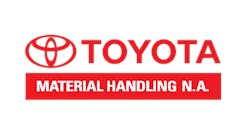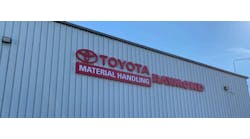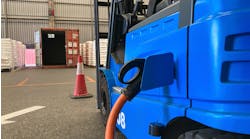Many facility managers find themselves fighting a never-ending battle when compelling lift truck operators to follow correct operating procedures. Employers are required to do everything reasonable to identify workplace hazards and minimize–or eliminate–risk of injury. They have invested in training, posters, warning lights, alarms and safety supervisors.
OSHA ranks lift-truck-related accidents as the sixth-largest cause of safety incidences. More than 100 people are killed and thousands are injured each year in the United States by lift trucks.
According to OSHA guidelines, lift-truck operators must be over the age of 18 and trained on the specific lift truck they operate. However, without a driver identification system to start the lift truck, managers struggle to control who is driving the equipment.
Seat belts protect the driver in the event of a major impact, rollover or tip over. Failure to use seat belts contributes to major injuries and even loss of life. The resulting suffering and loss of people and productivity create substantial losses for companies. Can you force operators to wear seat belts? Maybe not, but there is an active system available to minimize this problem.
OSHA requires a pre-start checklist to be completed before each shift. This helps to ensure the lift truck has no known safety-related faults. In the event of an accident, those records will show an employee has done the checks. Employers must collect the sheets and review them in the event a minor problem needs attention but does not prevent the use of the lift truck. Wouldn’t it be easier if that data could be recorded electronically and stored until it is needed? Then, negative notations can be brought to management’s attention early so action can be taken.
Many lift truck accidents are caused by over- loading or traveling with a load at an unsafe height. An
inexperienced driver may not understand the capacity of the lift truck or the weight of the load. When speed, lift height and inclines enter the picture, lift trucks have a safety margin of capacity. This safety margin allows a lift truck to pick up more than its rated capacity under certain conditions. However, overloading increases wear and tear. A lift truck scale could warn a driver of an overload situation and help to prevent injuries and damage to product, plant machinery and the lift truck.
Speed is another issue that contributes more than 20% of reported accidents, according to OSHA. Proper driver training should emphasize that speed should not exceed the ability to maintain control of the lift truck. By considering work conditions, products, other people and operator skill level, plant managers can determine a generally acceptable and safe speed. Most new lift trucks can have a maximum travel speed already programmed into their systems. Unfortunately, they do not allow for different speeds indoors versus outdoors, pedestrian traffic or operator experience. Multiple speed restrictions, based on zones or driver qualifications, can improve safety dramatically.
While investing in a safety-related solution might seem expensive at first, it more than pays for itself, even if it eliminates just one major injury. For example, one client told me a lift truck tip over cost more than $35,000 in damage to the lift truck and plant equipment. The cost would have been dramatically higher if the operator had been injured.



